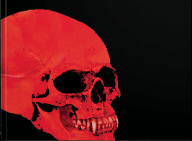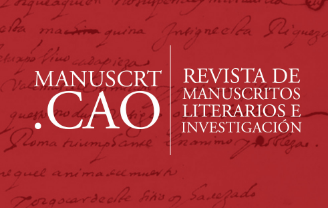Peer Reviewed Publications
Guaman Poma's Ecocentric Ethos in El primer nueva corónica y buen gobierno (1616)
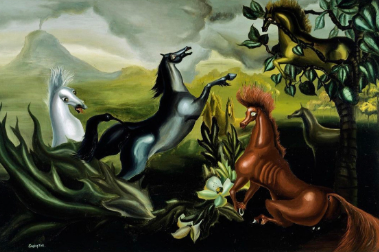
Plants and Animals in Latin American Cultures, Gainesville: University Press of Florida, 2024
ABSTRACT:
Guamán Poma de Ayala’s
El primer nueva corónica y buen gobierno (The First New Chronicle and Good Government) is a rich repository of knowledge on the nature of plants and animals. However, what makes this chronicle remarkable is Guamán Poma’s depiction of nature as an active participant in the shaping of the history and culture of Perú, challenging the anthropocentric worldview of the early 17th century.
El primer nueva corónica provides a unique perspective on the complex connections among humans, non-human animals, and plants, aiming to expose the dramatic consequences of Spanish colonial rule in the region. In addition to shedding light on the history and culture of the Andean native communities, the chronicle engages with the ethics of human treatment of the natural world. This paper examines the contributions of
El primer nueva corónica y buen gobierno, using interdisciplinary and transhistorical methodologies to explore its cultural implications. I argue that Guamán Poma de Ayala’s notion of “buen gobierno” (‘good government’) is ultimately fueled by what I call an “ecocentric ethos,” a worldview that places nature and the environment at the center of his epistemological concerns.
Humors and Rumors: Sonic Viscerality in Juan Pérez de Montalbán's La mayor confusión
Pornographic Sensibilities: Imagining Sex and the Visceral in Premodern and Early Modern Spanish Cultural Production, New York and London: Routledge, 2021, pp. 219-232
ABSTRACT: Despite having provoked the indignation of several moralists—including Francisco de Quevedo and González de Amezúa—a collection of novellas dealing with illicit themes, entitled
Sucesos y prodigios de amor
(1624), surprisingly managed to escape inquisitorial censorship. The text that most scandalized contemporary critics in the collection was La mayor confusión, whose plot deals with an incredible case of incest. It may seem surprising that censors would have seen nothing condemnable in such a plot but, as this chapter argues, censors couldn’t have seen anything worthy of censorship because the erotic charge of the work is in fact kept invisible. The work’s eroticism, as this chapter suggests, remains confined not to sight but to the sensory domain of sound. This study contends that the soundscape of Madrid, coupled with the sonorous interactions of the text’s protagonists, illustrates a so-called pornography that easily escaped the scrutiny of censors.
Estrategias e imaginarios barrocos en La sombra de don Quijote (2014) de Patricio Clarey y Lara Fuentes
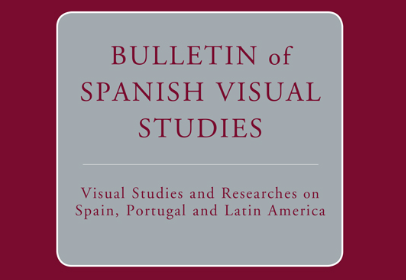
Bulletin of Spanish Visual Studies 8.1, 2024
RESUMEN: Este trabajo supone un análisis de la novela gráfica postapocalíptica La sombra de don Quijote (2014), de Patricio Clarey y Lara Fuentes, en relación con sus conexiones con los imaginarios barrocos. Fuentes y Clarey utilizan la figura de don Quijote transmitida por el imaginario colectivo para crear una distopía que podría denominarse retrofuturista.
En este artículo defiendo que Fuentes y Clarey se apoyan además en una serie de técnicas, estrategias e imaginarios que pertenecen a lo que se ha denominado "Barroco transhistórico". Concluyo que la obra se sirve de un pasado remoto para criticar tanto un presente como un futuro inciertos.
Letra y sonido en las estructuras epistemológicas de la Primera parte del Parnaso antártico (1608)
Entre Caníbales: Revista de Literatura 3.11, 2019, pp. 159-181
RESUMEN: La fundación de las primeras academias literarias del virreinato del Perú, a finales del siglo XVI, supone una de las muchas imposiciones estructurales que Occidente practicó durante la ocupación colonial americana. Aliadas de una cultura elitista y letrada, estas academias se proclamaron a sí mismas como fundadoras de una escuela diferente de la peninsular. Este “nuevo estilo”, a la vez que reclama una diferencia, replica las ideologías de un discurso dominador que silencia las voces nativas, pues no se ajustan a sus postulados estéticos e ideológicos. Sin embargo, una lectura atenta del corpus textual producido en el seno de dichas academias revela que la oralidad andina tuvo una sutil pero profunda influencia sobre estas estructuras de poder. En este artículo analizo la actividad literaria de la Academia Antártica a partir del ejemplo concreto de la
Primera parte del Parnaso antártico (1608). Muestro que el rasgo diferenciador de este grupo de escritores (capitaneado por Diego Mexía) es, precisamente, la importancia que otorgan a la materialidad de la dimensión sonora y vocal.
Material Methodologies in Early Modern Iberian Treatises
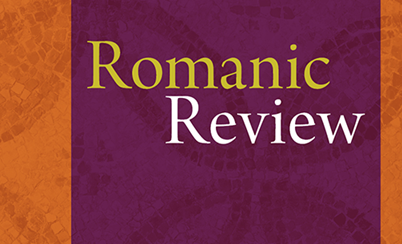
Romanic Review 114.2, 2023, pp. 237-258
ABSTRACT: Early modern culture was most fully expressed in events where materiality and textuality are inextricably intertwined: theatrical spectacles, royal parades, triumphal arches, processions, poetic tournaments, and jousts. At the other end of the spectrum, mainstream trends of nineteenth- and twentieth-century Hispanic philology—a prism through which early modern texts have been used and read for years—are part of a genealogy of thought that privileges form over matter. As a result, the radical importance of materials is frequently overlooked in the study of early modern culture. However, if we pay attention to early modern poetic and philosophical treatises, we can clearly notice the anxiety to justify the medium in which texts themselves were produced and transmitted. This article stresses the importance of materiality in two types of treatises from early modern Iberia: three sensory treatises by Oliva Sabuco (1587), Lorenzo Ortiz (1687), and Diego Calleja (1700); and three manuals of textual production by Juan del Encina (1496), Francisco Lucas (1580), and Alonso Víctor de Paredes (1680). The article sets out an argument for a materialist practice of literary criticism, a way to read early modern texts in terms of their own material theory.
Catalogación y estudio de los autógrafos de José de Espronceda
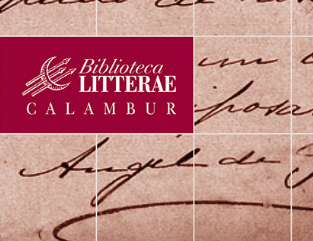
Biblioteca de Autógrafos Españoles IV
(s. XIX). Madrid: Calambur, 2015
RESUMEN: Conservamos un buen número de testimonios autógrafos de Espronceda en la Biblioteca Nacional de España, muchos de ellos, como es el caso del transcrito aquí, procedentes de la colección del pintor Manuel Castellano. Además del poema en octava que reproducimos (Mss/12938/91), la biblioteca custodia un cuadernillo de borradores y copias con correcciones autógrafas bajo el título Papeles de José de Espronceda, un romance dedicado a la Señora de Torrijos acompañado de una carta dirigida a la misma, el Poema burlesco sobre Dido y Eneas , un fragmento poético fechado en 1840 y varios recibos y contratos de distinta índole. Contamos con otro gran surtido de borradores en el archivo particular de Manuel Núñez de Arenas, compuesto por autógrafos de A la traslación de las cenizas de Napoleón y El Dos de Mayo, así como algunos pasajes de El estudiante de Salamanca y El Diablo Mundo. Otro archivo particular, el de Enrique Montero, conserva el autógrafo del Canto a Teresa y un borrador parcial de El estudiante de Salamanca.
Sentencias que se promulgaron contra Rodrigo Calderón y Carta que envió a su padre en la víspera de su muerte
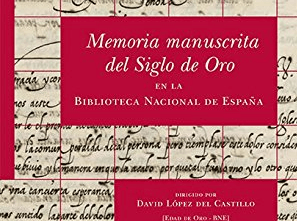
Tomás Tamayo de Vargas y las cartas al cronista Andrés de Uztarroz
Forthcoming
- Was Sor Juana a Sphinx? Transatlantic Enigmas and the Poetics of Exception
- A Prince Through the Mirror: Garcilaso and the Lyricization of Early Modern Poetry
- The Tongue of Cervantes in a Postcolonial Key
Selected reviews
- Nicole D. Legnani, The Business of Conquest: Empire, Love, and Law in the Atlantic World (Hispanic Review)
- Rosilie Hernández, Immaculate Conceptions: The Power of Religious Imagination in Early Modern Spain (Hispanófila)
- Nicholas R. Jones, Staging Habla de Negros: Radical Performances of the African Diaspora in Early Modern Spain (Calíope)
- Emily Francomano, The Prison of Love: Romance, Translation, and the Book in the Sixteenth Century (Hispanic Review)
- Luis Avilés, Avatares de lo invisible: espacio y subjetividad en los Siglos de Oro (Philobiblion)
- Karoline Cook, Forbidden Passages: Muslims and Moriscos in Colonial Spanish America (Revista de Estudios Hispánicos)
- Miguel Martínez, Front Lines: Soldiers' Writing in the Early Modern Hispanic World (Journal of Spanish Cultural Studies)
Other publications
- Divas negras, feminismos negros: el “habla de negros” y el cuerpo de las mujeres negras en Lope de Rueda [translation from Nicholas R. Jones, “Black Divas, Black Feminisms: The Black Female Body and Habla de Negros in Lope de Rueda”]
- Líquidos, sonidos, sensibilidad montalbaniana: La mayor confusion (1624), Iberian Connections: Medieval and Early Modern Studies and Contemporary Critical Thought, Yale
- Lope y sus nombres: identidad y desdoblamiento lírico en las Rimas sacras (1614), Esferas

